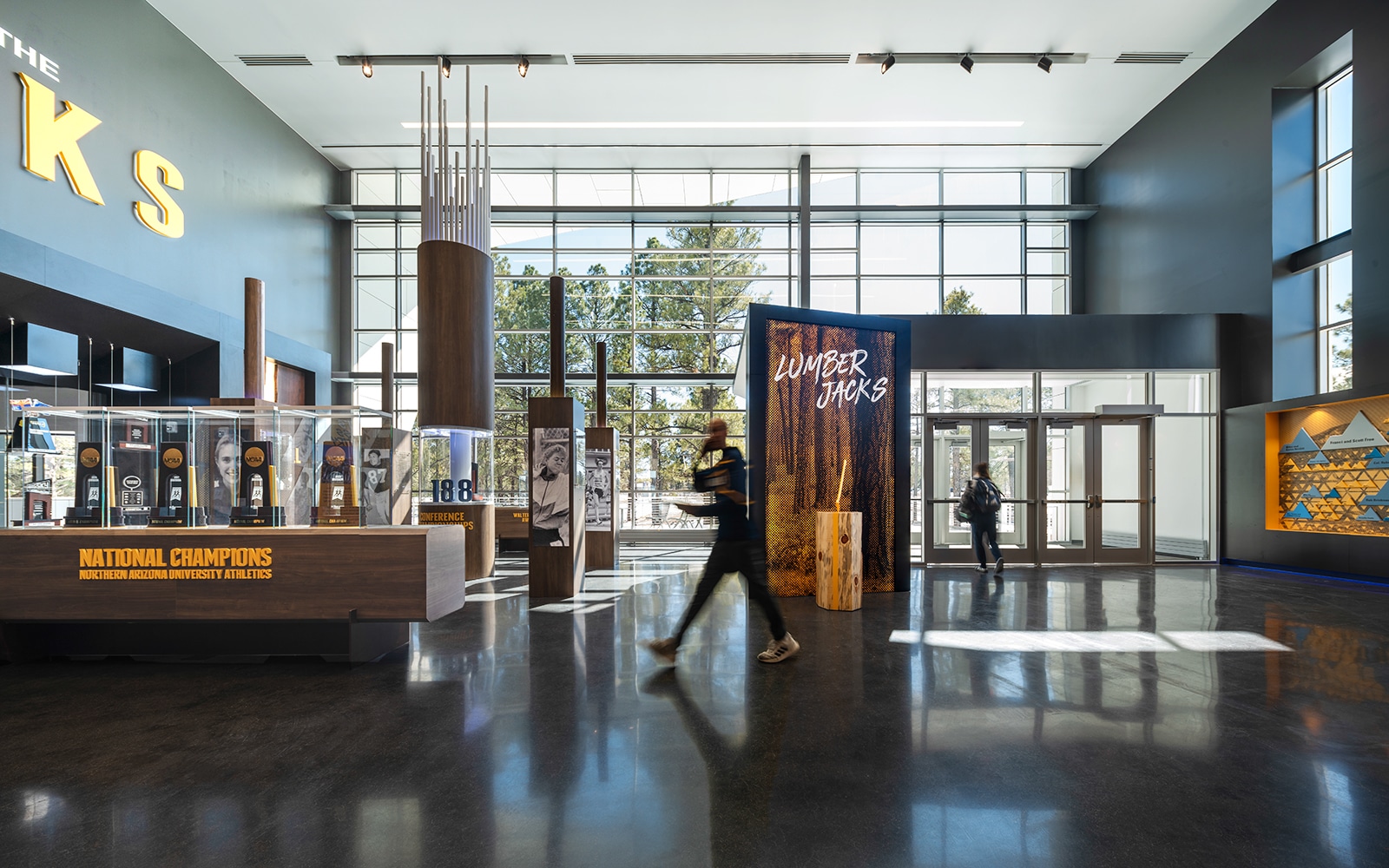|
Getting your Trinity Audio player ready...
|
The challenges for the facilities team at Northern Arizona University (NAU) located in Flagstaff, two hours north of Phoenix, have only increased since the COVID pandemic of 2020. “It seems like people just disappeared,” Stephen Vedral jokes. “Maybe there was a rapture we didn’t know about.”
The associate vice president of facility services was joined by Stephanie Diane Bauer, director of facilities and maintenance at NAU, to discuss the evolution of their team necessary to confront staffing shortages, declining enrollment, and massive spikes in construction costs. While “doing more with less” may be a sign of the times for many in the facilities and construction realm, it’s clear that Vedral, Bauer, and the entire team at NAU are employing forward-thinking projects and tech-enabled solutions that aren’t just stop-gap measures—they’re plotting a new way forward for their entire department.
“If you look at the national picture facilities, institutionally, [they] never seem to be on the cutting edge of technology,” Bauer says. “I think we’re really trying to change that and figure out how to advance our department when both our staff and our budget is continuing to diminish. We think that way forward can be enabled with both software systems and new equipment solutions.”

This broader philosophy is best explained with a series of small pilot examples. Vedral credits Bauer with the pilot approaching, which will test a concept before employing it on a larger scale. In trying to better understand the fleet needs of NAU moving forward, the facilities team installed telematics software on 10 vehicles to collect data.
“We want to get the real story about whether or not we need more vehicles in the future,” Vedral explains. “The pilot was successful, so we’re now running the software on our entire fleet.”
Another pilot is still in the works. A key storage system for NAU’s facility service personnel locks keys when they’re not being used and sends alerts if those keys are not returned. It may seem like a small efficiency, but instead of having to send facility workers and vendor partners across campus to the building access services department, significant time and effort can be saved.

Time and effort, not staff replacement, is the name of the game. Vedral came across a robotic painter that uses GPS technology to paint fields for soccer, football, and other athletics.
“It was costing our paint shop between $50,000 and $75,000 a year for that work,” Vedral explains. “In what would have taken my crew many hours, the automated machine can paint the soccer field in 30 minutes, more accurately. These kinds of efficiencies help us close the gap on our ability to serve our entire campus, which is an incredible challenge.”
Not every pilot is a success. That’s the point. A smart restroom which includes occupancy sensors, smart fixtures, and dispensers which gather data and alert us when attention is needed, is going to need some work, not because the technology isn’t there, but because adaption and buy-in has been hard to garner. “That’s one of the variables we have to account for,” Bauer explains. “Does our staff like it, and will they aid the implementation? Without them, we will not be successful.”

“It’s tough, because our janitorial staff have been understaffed for years, but I still think there’s some pushback to this technology that, in the long run, would make their hard work a little easier,” Vedral adds.
While NAU has a beautiful campus, the city of Flagstaff continues to be a comparatively expensive city to live in, not just for workers, but for construction projects as well. With little between the two-hour drive to Phoenix, construction costs already have a 20 to 30 percent premium tacked on to get materials and workers there, and that was before COVID.
Significant construction projects have been put on hold because prices have more than doubled in many cases. A pre-engineered steel building designed for engineering labs estimated at $2 million now rounds out to over $5 million. “You just can’t absorb that,” Vedral says. “And we can’t even get the mechanical systems until April 2023 because of the supply chain backup.”

While some projects have been put on hold, the student athlete high performance center completed earlier in 2022 is an incredible feat and feather in the facility team’s cap. The 72,000-square-foot training complex includes a grand hall, an academic lounge, and locker rooms with thematic lighting.
The cardio mezzanine, the “largest altitude-controlled simulation room on a collegiate campus,” allows student athletes to train at atmospheric conditions from sea level all the way up to 12,000 feet. Students would have to travel to cities like El Alto, Bolivia, or Shigatse, China, to find those elevations, otherwise.
And so while the times may be challenging for builders at NAU, the partnership between Vedral, Bauer, and the rest of their team remains strong. “Any success we have is because we’re all willing to work together as a team,” Vedral says.
“That’s so true,” Bauer agrees. “We really have to show some love for our people here, because they work hard and do incredible work.”


